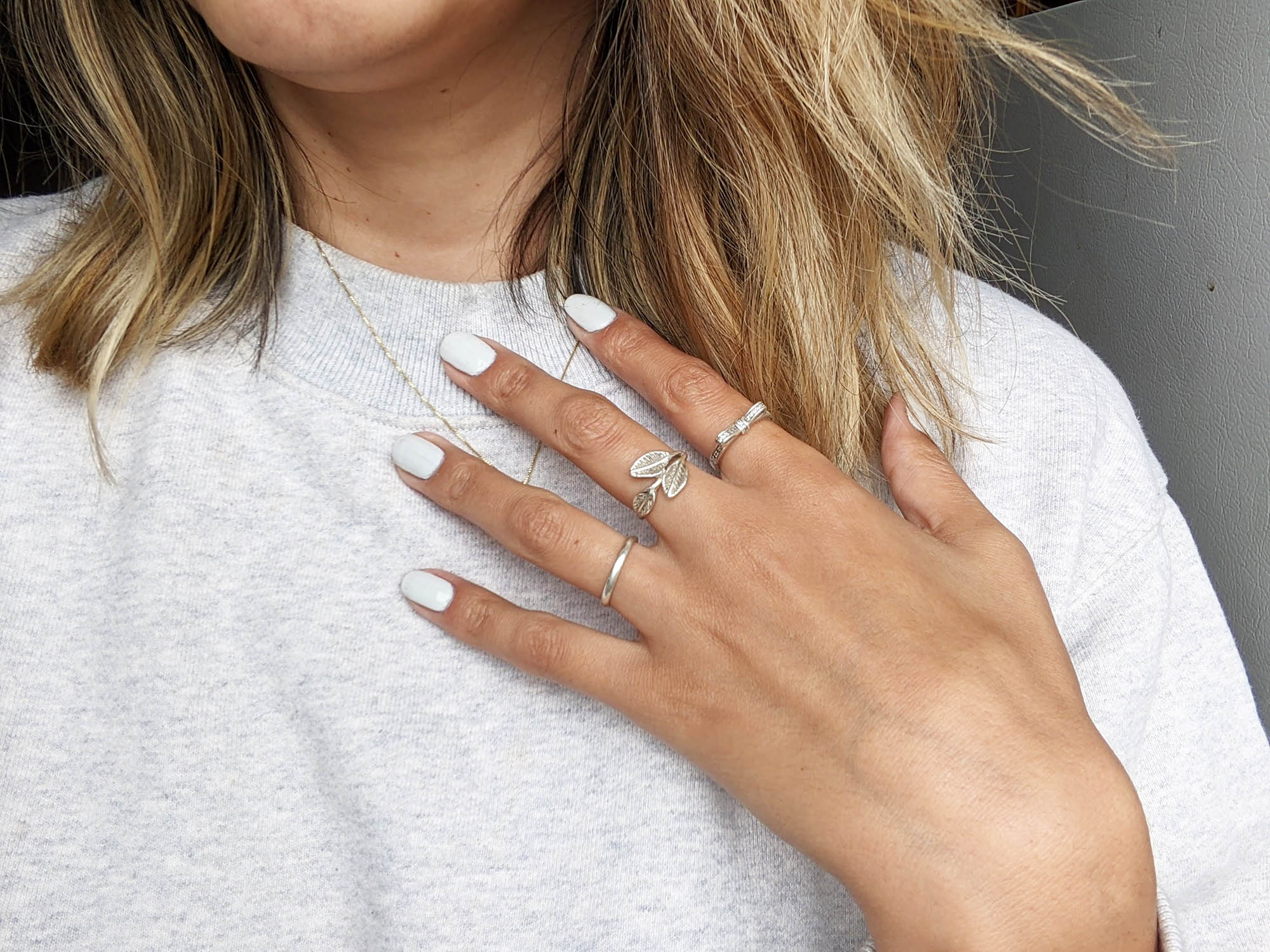

If you haven’t laid eyes on your silver jewelry since the pandemic hit early last year, it’s probably tarnished by now. Don’t blame yourself, though—that dark layer covering your favorite earrings or necklace is the result of a natural chemical process that occurs when sterling silver is exposed to the air. To a certain extent, it’s avoidable and, better yet, reversible.
Using items you probably already have in your kitchen, you can easily get rid of that ugly tarnish—just in time to show off your sparkling trinkets under the spring and summer sun.
Why does silver tarnish?
Pure silver doesn’t tarnish easily. But before you accuse any stores of selling you tin foil, know that jewelry is never 100 percent silver. The purest form of this metal is way too soft and malleable, and any pure piece would bend out of shape after a bit of use.
This is where sterling silver comes in—it’s 92.5 percent pure silver and 7.5 percent copper, which makes it stronger and more durable. If that number seems familiar, it’s because it’s common to find “925” engraved somewhere on a piece of sterling silver jewelry to denote the high quality of the metal.
But copper is also responsible for making this alloy more prone to tarnishing. This happens when silver comes into contact with sulfur particles in the air and bonds with them to produce silver sulfide. This new compound is black, and it creates a dark, not-so-glamorous patina over your silver accessories as it accumulates.

You could use abrasive methods, like whitening toothpaste, to scrape off the thin layer of silver sulfide, but you run the risk of damaging your jewelry. Instead, use science.
Materials
- Container (takeout containers work well)
- Aluminum foil
- A beaker (or measuring cup)
- 1 cup of just-boiled water
- 1 tablespoon of baking soda
- 1 teaspoon of salt
Instructions
1. Line the inside of your container with aluminum foil. Keep the shiny side of the foil up. The size and material of your container doesn’t matter as long as it can hold all your tarnished jewelry. If your container is big, use two or more sheets of aluminum foil and overlap them to cover the entire bottom of the container.
2. Bring the water to a boil. Then take it off the heat.
3. Pour one cup of water into the measuring cup or beaker. Then add the baking soda and salt. Stir to mix.
- Pro tip: If you want to clean a lot of jewelry or other large items, just adjust the quantities: get a big container and measure 1 cup of baking soda and a 1/3-cup of salt per gallon of water.
4. Put your silver pieces inside the container and pour in the baking soda solution. Make sure your jewelry is totally submerged and touching the aluminum foil (we’ll explain why in a moment).
5. Let it sit until the water cools off. Let chemistry do its work and watch those bubbles rise.
In nature, elements often bond to others to create new compounds, but some elements get along better with others. While sulfur bonds easily with silver, it likes aluminum better, for example. This “friendship” means that when your tarnished jewelry touches the foil, an electrochemical reaction ensues.
In it, the sulfur in the silver sulfide on your jewelry detaches and bonds with the aluminum molecules in the foil to create aluminum sulfide. This is all possible thanks to an electrical microcurrent between the metals, which is similar to how batteries produce electricity. The bubbles you’ll see coming out of the most tarnished crevices of your jewelry are carbon dioxide, a byproduct of this reaction. Oh, and the faint, gross smell of rotten eggs? That’s sulfur. It means it’s working.
Without sulfur, the black patina on your jewelry goes back to being silver, reversing the tarnishing process and bringing back the bling to your pieces without damaging them.
6. Inspect your jewelry and repeat the process if necessary. The water temperature and the presence of salt and baking soda accelerate the cleaning process. Cold water and aluminum foil by themselves would still result in untarnished silver pieces, but it could take days before you saw any results. If there’s any tarnish left when the water cools, you can reheat the water and submerge your pieces all over again.

7. If you’re happy with the results, finish up. Baking soda will leave a white cast on your jewelry, so rinse it under the faucet once you take it out of the solution. Then dry and polish it with a microfiber cloth to keep your piece lint-free.
- Pro tip: Put your jewelry in a strainer while you’re cleaning them. Too many precious rings and necklaces have gone down the drain, and you don’t want yours to be one of them.
Correction: June 14, 2021 — This story previously adjusted the recipe to 3/4 cup of salt per gallon of water. It’s 1/3 cup.